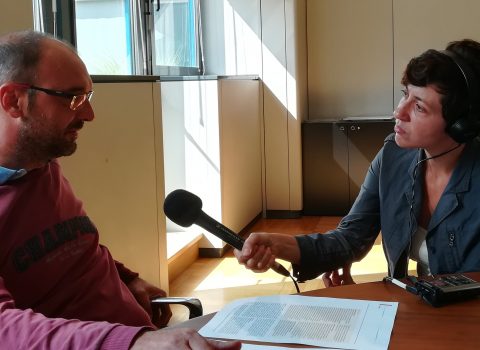New coronavirus, what science can and cannot tell us
There is no scientifically valid information on the epidemic, now global, to help fight its spread, which could also soon affect our country
“Unfortunately, information is currently scarce and unreliable so we cannot have an earnest and accurate discussion about this new virus. We are unable to answer many open issues. Actual circumstances, virus spread, symptoms, incubation period: all matters of uncertainty that, in the absence of definite data, make it impossible to shed light and, consequently, make it complicated to act effectively to contain the epidemic”.
Stefano Merler – FBK researcher, head of the Dynamical Processes in Complex Societies Research Unit and epidemiology expert – is very clear about it. The lack of reliable information from the Chinese authorities does not help experts to counter the spread of the new coronavirus, known as the Wuhan virus, named after the Chinese city where the first outbreak was found on December 31.
“It is not the first time that coronaviruses have triggered epidemics on a global scale – the researcher points out -. In this millennium alone, we have witnessed the spread of SARS in 2002, and MERS in 2012, genetically similar viruses that have affected thousands of people around the world, reaching mortality rates of 30% in the case of MERS. This new virus is similar to its older brothers and, like them, it affects the respiratory system but we still know little about it”.
Where do these viruses come from?
“A new virus tends to be generated from the encounter of different viruses within hosts, most of the time animals. By meeting, the viruses exchange small pieces of DNA and recombine, mutate, giving rise to a new virus, possibly infecting humans and then spreading among humans. But there are many other ways.”
Stefano, should we be worried?
“Not excessively, but only because at the moment we are unable to give definite answers. Of this new virus, identified as 2019-nCoV, very little is known and what you read or hear around, even in authoritative media, is often the result of inferences rather than of proven evidence. The claim itself that the virus spreads among humans stems from the deduction that it is impossible for all the 570 confirmed cases, about ten of them outside China, to have contracted the virus at the Wuhan market. These numbers are too high to exclude human-human and airborne transmission. Faced with this scenario, we can also reasonably believe that alongside the official number of people with viruses there are thousands more who do not show any obvious symptoms, precisely because we do not know how symptomatic this virus is”.
Thus, it becomes difficult to recognize the virus and counter the spread of the epidemic.
“It becomes extremely difficult due, again, to the lack of reliable information. An effective and ‘strong’ action could be the blocking of air travel and the flows in and out of Wuhan. But before implementing such extreme and socio-economic dramatic measures, we need to understand what we are facing. Unfortunately, the screening measures for passengers have only started in these past few days, almost a month after the first confirmed cases, and therefore, until yesterday, those who had contracted the virus were allowed to move freely in other cities, countries, continents, taking the new coronavirus with them. Unfortunately, the incubation period, which is essential for effective screening, is not known. Take for example the screening procedures that all airports are putting in place these days: a person who shows symptoms is identified without major problems and undergoes the prophylaxis provided by the competent health authorities while a person who does not show obvious symptoms goes past the screening even if carrying a virus. Incubation times for SARS and MERS were five to six days. It could be the same for the new coronavirus, but we don’t know. In addition, screening may be totally ineffective in identifying people who are infected, and who can potentially transmit the virus but are asymptomatic.”
The numbers of infected people, even outside of China, and the deaths due to the 2019-nCoV virus are climbing day by day.
“This is more worrying. Looking at what has been happening in these past few days, I fear that the data is bound to grow and that the chances of the virus reaching us sooner or later are also high. Obviously no vaccines or therapies have been developed as of yet, so to protect yourself and reduce the risk of infection the advice is to follow the recommendations of the health authorities”.
What can the scientific world do?
“At this time, I repeat, everything is really hard. However, national health authorities and research bodies are already working on it, and public health authorities still have the tools to take action, despite all the uncertainties. We will probably work on it too. However, it will be necessary to wait for scientifically valid and reliable data”.



